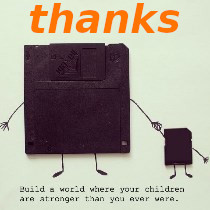the git-concept:
1. you have a local git repository (/var/www/projectname/.git)
2. via commandline you “hook-up” the local repository with a remote repository (transmission is done via ssh, keys or password)
3. first you commit to local repository, than you do a push to the remote repository…
4. merges are done “in-file” means: git changes your files, inserts all the differences (<—- difference here) and you need to edit it with your favourite IDE.
now how to set this things up?
====== SETUP GIT ======
on server:
aptitude update
aptitude upgrade
aptitude install git
mkdir -p /var/git/projectname
cd /var/git/projectname
git --bare init;
git config core.sharedrepository 1;
git config receive.denyNonFastforwards true;
find objects -type d -exec chmod 02770 {} ;
on client:
you can do this via commandline or via eclipse, there is no (major?) difference.
via command line:
mkdir /var/www/projectname cd /var/www/projectname git init git add * git commit -m "My initial commit message"
or via eclipse:
r-click on projectname -> team -> share -> git hook @ create repository in parent folde click on button create repository
in terminal:
git remote add origin ssh://username@yourgitserver.com:SSHPORTNUMBER/var/git/projectname; git add *; git commit -m "my initial commit message"; git push -u origin master;
again in eclipse
1. r-click on projectname -> refresh 2. r-click on projectname -> team -> add to index 3. r-click on projectname -> team -> commit (locally) 4. r-click on projectname -> team -> remote -> push (remote)
liked this article?
- only together we can create a truly free world
- plz support dwaves to keep it up & running!
- (yes the info on the internet is (mostly) free but beer is still not free (still have to work on that))
- really really hate advertisement
- contribute: whenever a solution was found, blog about it for others to find!
- talk about, recommend & link to this blog and articles
- thanks to all who contribute!

